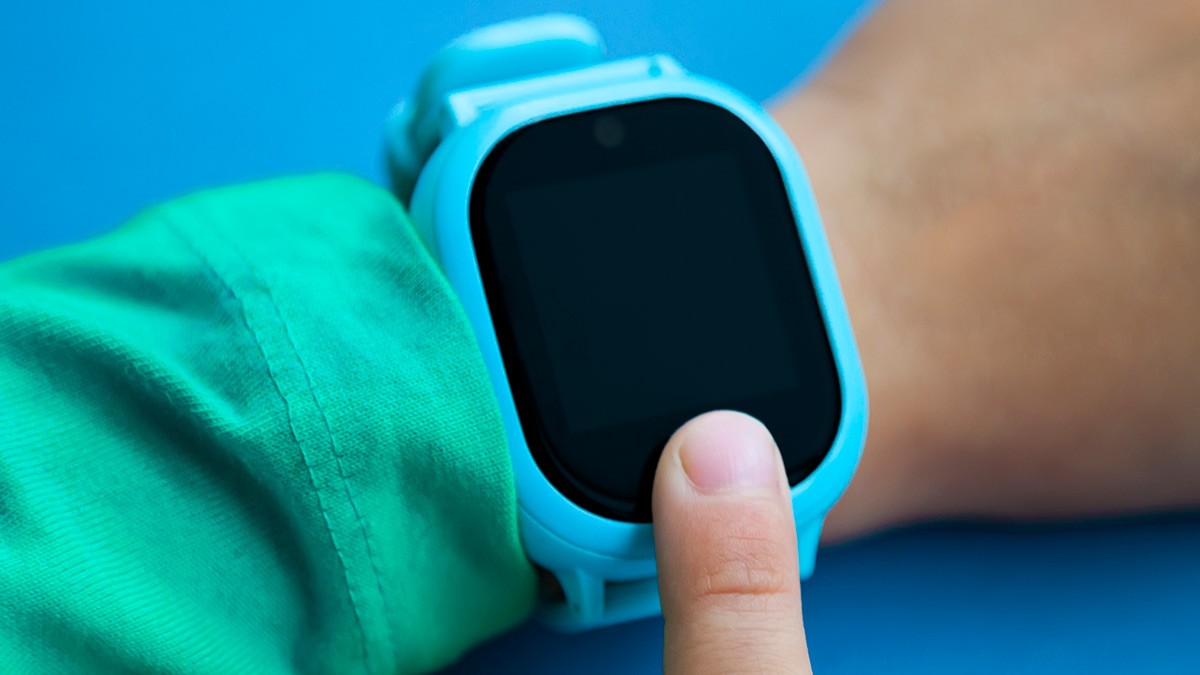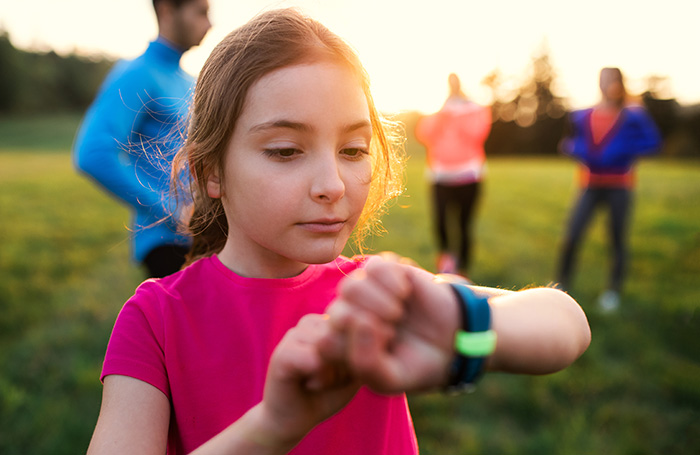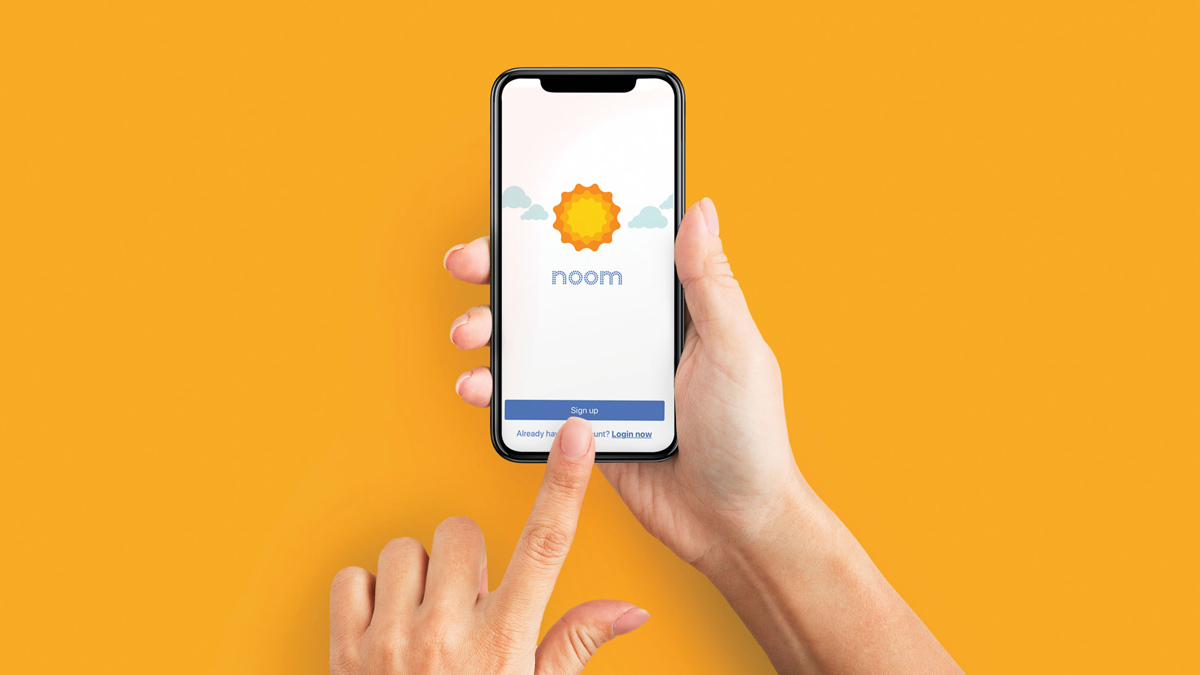Get our independent lab tests, expert reviews and honest advice.
Do kids really need fitness trackers?

Wearable technology that lets users track their steps, activity, kilojoules burned and even sleep patterns every day has become a must-have for fanatics and new-leafers alike.
In 2020, 7.6 million Aussies were wearing some kind of wearable smart device with a fitness tracking component on their wrist, according to Australian telecommunications consultancy Telsyte.
From basic plastic models to high-end smartwatch devices, more and more Australians are strapping some kind of fitness tracker to their wrist as part of their daily routine. And where adults tread, children are often keen to follow, with many kids now using fitness trackers designed exclusively for them.
From the popular Fitbit Ace 2 and Garmin Vivofit Jr. 3 to the lesser known Leapfrog Leapband Activity Tracker, Vtech Kidizoom Smartwatch DX2, there’s seemingly a fitness wearable for all childhood ages and stages on the market.
But do children really need fitness trackers in the first place? And can they cause more harm than good?

Concerns around keeping track
You only have to walk past your local primary school or preschool at playtime to see the hive of activity children create. From skipping, cartwheels, running and climbing, many playgrounds give the impression that if the energy created by little kids could be harnessed, it could power a small city.
But at the same time the statistics are alarming when it comes to Australian children’s health, with one in four kids now classified as overweight or obese, and an increasingly sedentary population spending more and more time indoors or on devices.
Statistics are alarming … with one in four kids now classified as overweight or obese
It’s no wonder, then, that plenty of parents are attracted to the idea of technology that helps to get kids up and moving. But the jury is still out on whether wearable tech is really the answer when it comes to kids and their health.
While some experts say the gamification of exercise is a good fit for modern children who are already using technology and devices in most other areas of their life, others have concerns about online privacy and the danger of applying a simple approach to the complex issue of children’s health and fitness.
Age appropriate?
Brodie Cambourne, an accredited exercise physiologist, says while fitness trackers can be suitable for some children, age does matter.
She says children under five are too young to be tracking their activity, and fitness and activity should be fun and play-based for little ones.
She says that some primary-age children may like to use fitness trackers as they can view their progress online and share it with peers and family members. However, any use of these devices should be monitored by parents and carers, who can help interpret results and offer positive feedback.
The key to getting kids to enjoy being active is to keep them engaged, whether that’s using technology or any other approach
Cambourne says when it comes to exercise overall, the key to getting kids to enjoy being active is to keep them engaged, whether that’s using technology or any other approach that suits the individual: “When a child is engaged in an activity it means that they feel that the activity is achievable, has benefit to them and is something that they can feel confident to talk about.”
For some kids that may mean using technology like a fitness tracker, says Cambourne: “They allow children to view their progress, which in turn encourages them to talk about their progress or show others what they have been completing each week.”

Evidence lacking for kids
Tracking your fitness with wearable technology is not new for adults, but is the same approach right for children?
Jill Hnatiuk, senior lecturer in in physical activity and health at Deakin University, says that while there’s evidence that fitness trackers can be effective for adults, there just isn’t yet enough information on whether they’re effective with children.
“We certainly know that the physical activity children engage in is very different to adults – both in the nature of the activity, as well as the factors that influence their physical activity participation. Thus, it usually isn’t suitable to apply adult physical activity promotion strategies to children.”
Hnatiuk says that if a parent or carer’s goal is to increase physical activity in their children, there are many other established, evidence-based strategies that can be used to do this instead of looking to a fitness tracker for a solution.
“I also find it interesting that trackers largely put the onus on the individual, while we know that there are many factors within our social and physical environment that influence the physical activity that a person – adult or child – engages in.”
Anxiety and eating disorder risks
Despite the rise in popularity in wearable technology, there are concerns that tracking movement could trigger obsessive behaviour and even eating disorders in children and young people, particularly when many apps encourage users to share their results with peers.
In 2016, a New Zealand high school counsellor voiced concern that tracking steps and kilojoules could become a fixation with some students, especially girls trying to lose weight.
These concerns were also reflected by students themselves in a 2017 study of 100 13–14-year-old UK school children who wore a fitness tracker for eight weeks. Researchers discovered the experiment made some students lose confidence in their physical ability and that others reported that wearing the device made them feel fat and uncomfortable.
Kevin Barrow, CEO of The Butterfly Foundation, which represents people affected by negative body image and eating disorders, says that using fitness trackers can be problematic for some as they encourage the idea that health is based on a numerical value. “We know this is not a sufficient enough way of understanding health, and can be dangerous for some young people.”
Fitness trackers can impact a young person’s relationship with exercise in a negative way
Kevin Barrow, CEO of The Butterfly Foundation
Barrow says fitness trackers can promote behaviours that are often associated with eating disorders such as counting of steps and kilojoules.
“Fitness trackers can impact a young person’s relationship with exercise in a negative way. Movement, exercise and physical activity can become competitive, a chore, excessive and obsessive. Children should be encouraged to move their bodies for enjoyment, their health and wellbeing. All children should be encouraged to move in this way, not just those living in larger bodies,” he says.
“If you are concerned about your child’s health, development or body size, seeking advice from a health professional is key, preferably one who will focus on the overall health of a young people and not just weight.”
Brodie Cambourne says that a child using a fitness tracker to set goals that may not be achievable for their age group or ability could definitely cause anxiety, as can using an app that shares results with family or peers.
“If fitness trackers are being used in a group or family situation where there may be siblings who often perform the same activity,” says Cambourne, “then it is worth checking with each child if they would like to publish their progress or keep it personal, much like a diary.”
How much activity do kids need to do?
From birth to pre-school
From 0 to 1 year, even very little babies should be encouraged to move, including tummy time and other floor-based play. From one to age five they should be physically active for at least three hours through the day.
For school kids
School-aged children need at least an hour of moderate to vigorous activity every day, including activities that strengthen muscles and bones, such as skipping, climbing, dancing or gymnastics three times a week.
Tips for getting your kids moving (without technology)
- Encourage children to play active games like obstacle courses, tag, skipping; throw a ball or a frisbee around, play balancing games or leave the car at home and ride your bikes to the shops.
- Set a goal to visit playgrounds, parks, nature reserves, ovals or beaches regularly. Schedule this into your family calendar so it becomes a priority.
- Get children involved in a variety of different sports and activities to find one they enjoy participating in.
- Schedule regular device-free time for your family, and use that time to do something active together like playing in the backyard, taking a walk or going for a swim.
- Identify short walking or riding trips in your neighbourhood that can be undertaken safely.;
- When driving somewhere, park the car some distance away and walk with children for the rest of the trip.
Keeping safe online
Using a fitness tracker generally means capturing your data via a smartphone app, which often offers options for sharing information with friends, family or via other social media platforms. Some of the more sophisticated wearables also include GPS. As a result, there are concerns children’s privacy and safety.
eSafety Commissioner Julie Inman Grant says parents need to be aware what’s involved with any wearable devices they buy for their children. Wearables often link to apps which collect information, and many have sensors to collect physical and biological information, as well as location tracking.
“Be mindful about oversharing. Most fitness trackers and smartwatches allow users to link with friends, giving them access to sleep patterns, exercise times, locations and other health information,” says Ms Inman Grant.
“It’s really important to take the time to read the terms of use of the associated app carefully and assess whether you’re comfortable with what data is being collected and how it’s being used. Some apps collect information for marketing purposes and you may agree to this when you agree to the app’s terms and conditions.”
Check your privacy settings
Security and privacy settings should also be top of mind if you do decide to buy a fitness tracker or wearable. Checking privacy settings are set correctly can prevent uninvited persons from knowing where and when your children exercise or meet up with friends for activities.
“Make sure the device you choose allows you to make good, informed choices about what personal information you want collected, and how this will be shared,” says Ms Inman Grant.
How to stay safe online
- Keep track of your devices and associated accounts. Losing a device can allow third-party-access to the information stored on it.
- Secure your device, accounts and apps with strong passcodes and passwords.
- Use bluetooth when pairing with other devices, and only pair with devices you are aware of and can control.
- Manage your device even when it is not in use – when not in use, store it in a safe place where no one else can access it.
- Limit the amount of information shared with software and third parties.


